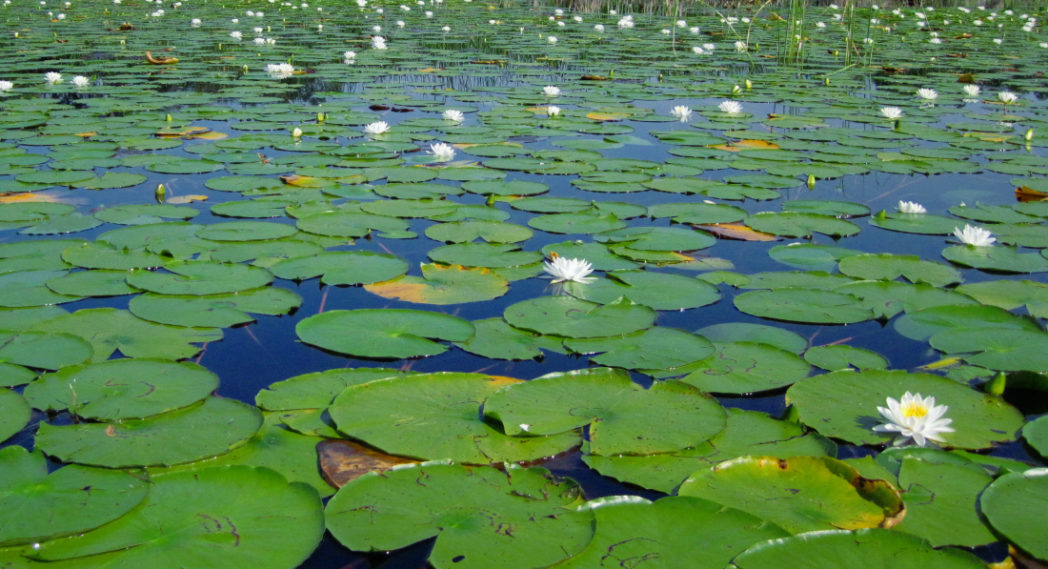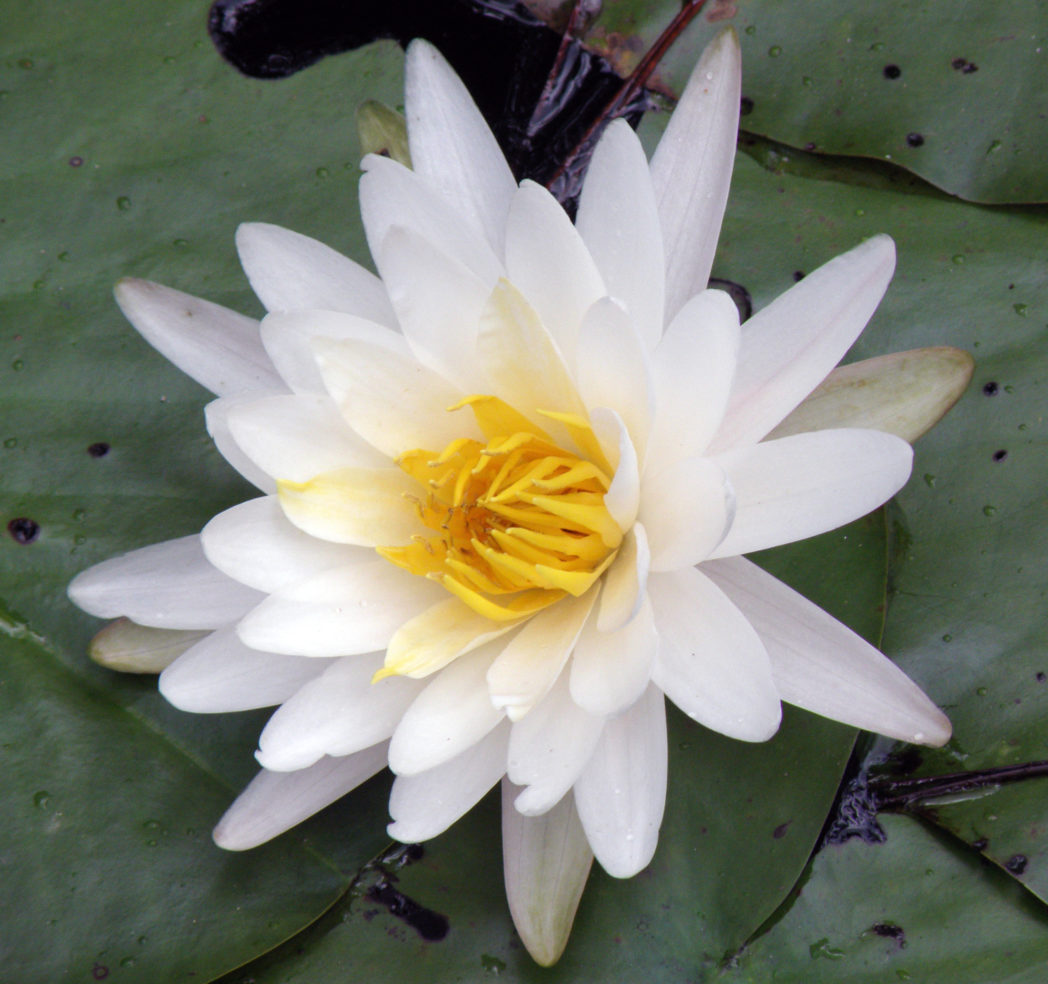American white waterlily
Pictured above: American white waterlily (Nymphaea odorata) by Stacey Matrazzo. Click on terms for botanical definitions. View post as a PDF.
American white waterlily (Nymphaea odorata) (also known as fragrant waterlily) is a floating aquatic plant that produces a large, solitary, fragrant flower with numerous white, lanceolate petals and yellow centers. Leaves are large and orbicular with a clefted base. They are dark green and shiny. Fruits are leathery, globose capsules with numerous small gray to orange seeds. The plant is rooted in the submerged soil.
American white waterlily flowers spring through fall. It is tolerant of varied climates, but is typically dormant during cool weather. It occurs naturally in swamps, marshes, slow-moving streams and shallow lakes, ponds and ditches.

The seeds, flowers and leaves of the American white waterlily are edible to humans. Leaves and unopened flowers can be boiled, while the seeds can be ground into flour. The flowers are also attractive to butterflies, but they are pollinated primarily by beetles (see Beetle Pollination Syndrome for a full explanation).
Family: Nymphaeaceae (Waterlily family)
Native range: Nearly throughout Florida
To see where natural populations of American white waterlily have been vouchered, visit www.florida.plantatlas.usf.edu.
Hardiness: 8A–10B
Soil: Roots require fully saturated soils
Exposure: Full sun
Growth habit: Leaves up to 18” wide and flat on the water’s surface; flowers 2–6” wide
Propagation: Seed
Garden tips: American white waterlily can be propagated by seed and from pieces of underwater stems. It can be a beautiful addition to a water garden or small pond, but its growth can be difficult to limit.

